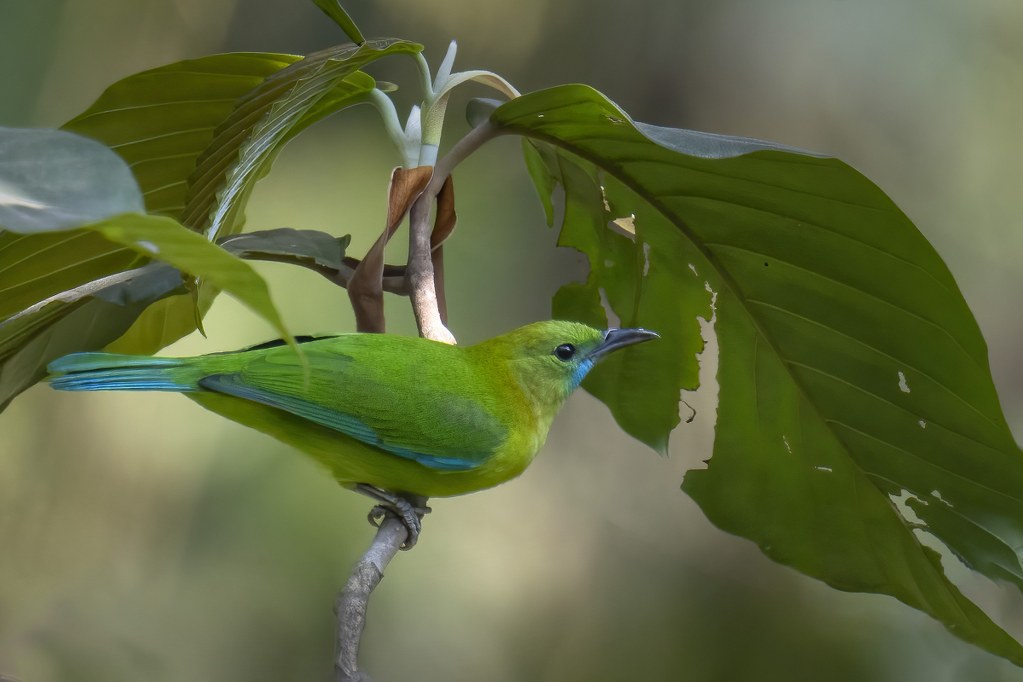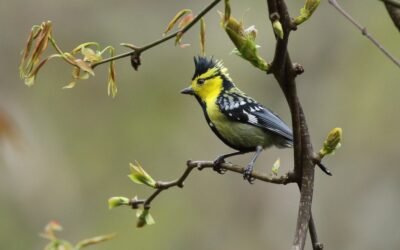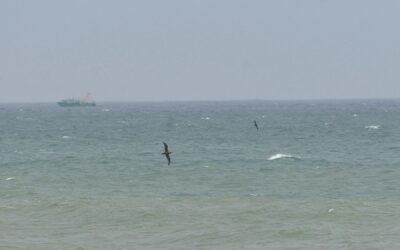Each year, eBird updates the base eBird/Clements checklist to take into account any changes resulting from newly discovered species or better taxonomic understanding — including species splits, lumps, name changes and changes in sequence. Among these updates are species splits and lumps; name changes; and the insertion of new spuhs, slashes, and so on.
During the process, species names may appear in unexpected ways, other records may temporarily become subspecies groups, and your species totals may jump around.
The number of changes for the birders in South Asia are small but some of them impact a large region. Here are the major changes relevant for us.
SPLITS
Lesser Sand-Plover Charadrius mongolus is split into:
- Siberian Sand-Plover Anarhynchus mongolus [map] [media] [my records]
- Tibetan Sand-Plover Anarhynchus atrifrons [map] [media] [my records]
The latter occurs in most of South Asia while the former is hypothetical. Note, the genus also has changed from Charadrius to Anarhynchus. Also note, apart from the default English name of Clements, the English (India) name has been changed to Tibetan Sand-Plover (Lesser Sand-Plover).
Cattle Egret Bubulcus ibis is split into:
- Western Cattle Egret Bubulcus ibis [map] [media] [my records]
- Eastern Cattle Egret Bubulcus coromandus [map] [media] [my records]
The latter occurs in most of South Asia while the former has occurred in Pakistan (once) and has been introduced in Chagos Is. in the Indian Ocean.
Intermediate Egret Ardea intermedia is split into:
- Medium Egret Ardea intermedia [map] [media] [my records]
- Yellow-billed Egret Ardea brachyrhyncha [map] [media] [my records]
The former occurs in most of South Asia. Note, apart from the default English name of Clements, the English (India) name has been changed to Intermediate Egret (Medium Egret).
Northern Goshawk Accipiter gentilis is split into:
- Eurasian Goshawk Accipiter gentilis [map] [media] [my records]
- American Goshawk Accipiter atricapillus [map] [media] [my records]
The former occurs in most of South Asia. Note, apart from the default English name of Clements, the English (India) name has changed to Eurasian Goshawk (Northern Goshawk).
Blue-eared Barbet Psilopogon duvaucelii is split into:
- Blue-eared Barbet Psilopogon cyanotis [map] [media] [my records]
- Black-eared Barbet Psilopogon duvaucelii [map] [media] [my records]
Only the former species occurs in South Asia and in the forests of north-east India. However, its English name remains the same for us and only the scientific name has changed.
Crimson-breasted Woodpecker Dryobates cathpharius is split into:
- Crimson-naped Woodpecker Dryobates cathpharius [map] [media] [my records]
- Necklaced Woodpecker Dryobates pernyii [map] [media] [my records]
The former occurs in most of South Asia. Note, only the default English name of Clements has changed while the English (India) retains the name as Crimson-breasted Woodpecker (Crimson-naped Woodpecker).
Greater Flameback Chrysocolaptes guttacristatus is split into:
- Greater Flameback Chrysocolaptes guttacristatus [map] [media] [my records]
- Malabar Flameback Chrysocolaptes socialis [map] [media] [my records]
Malabar Flameback is a new species that is recognised while there is no other change for Greater Flameback. The Greater occurs in the Himalayan foothills, north-east India and north-eastern Ghats while the Malabar occurs in the Western Ghats.
Silver-breasted Broadbill Serilophus lunatus is split into:
- Silver-breasted Broadbill Serilophus lunatus [map] [media] [my records]
- Gray-lored Broadbill Serilophus rubropygius [map] [media] [my records]
Only the latter species occurs in India, and it is distributed in the foothills of northeast India. Note, apart from the default English name of Clements, the English (India) name has been changed to Grey-lored Broadbill (Silver-breasted Broadbill).
Hooded Pitta Pitta sordida is split into:
- Western Hooded Pitta Pitta sordida [map] [media] [my records]
- Nicobar Hooded Pitta Pitta abbotti [map] [media] [my records]
- Minahasa Hooded Pitta Pitta forsteni [map] [media] [my records]
- Eastern Hooded Pitta Pitta novaeguineae [map] [media] [my records]
- Biak Hooded Pitta Pitta rosenbergii [map] [media] [my records]
Only the first two species occur in India – the Western breeds along the Himalaya and winters in north-east India while the Nicobar is found only in the Nicobar islands. Note, apart from the default English name of Clements, the English (India) name has also changed for both species as it retains the same as the default name.
Northern House-Martin Delichon urbicum is split into:
- Western House-Martin Delichon urbicum [map] [media] [my records]
- Siberian House-Martin Delichon lagopodum [map] [media] [my records]
Only the former species occurs in most of India, while the latter has occurred only very few times in extreme Arunachal Pradesh. However, its English name remains the same for us and only the scientific name has changed. Note, apart from the default English name of Clements, the English (India) name has been changed to Northern House-Martin (Western House-Martin).
Blue-winged Leafbird Chloropsis cochinchinensis is split into:
- Blue-winged Leafbird Chloropsis moluccensis [map] [media] [my records]
- Javan Leafbird Chloropsis cochinchinensis [map] [media] [my records]
Only the former species occurs in India, and it is distributed in the foothills of northeast India. However, its English name remains the same for us and only the scientific name has changed.
Olive-backed Sunbird Cinnyris ornatus is split into:
- Ornate Sunbird Cinnyris ornatus [map] [media] [my records]
- Tukangbesi Sunbird Cinnyris infrenatus [map] [media] [my records]
- Sahul Sunbird Cinnyris frenatus [map] [media] [my records]
- Garden Sunbird Cinnyris jugularis [map] [media] [my records]
- Palawan Sunbird Cinnyris aurora [map] [media] [my records]
- South Moluccan Sunbird Cinnyris clementiae [map] [media] [my records]
- Flores Sea Sunbird Cinnyris teysmanni [map] [media] [my records]
- Mamberamo Sunbird Cinnyris idenburgi [map] [media] [my records]
Only the first species occur in India, restricted to the islands of Andaman and Nicobar Islands. Note, apart from the default English name of Clements, the English (India) name has also changed to Olive-backed Sunbird (Ornate Sunbird).
DEFAULT ENGLISH NAME CHANGES
Birders will be happy to know that in the current taxonomy update, eBird/ Clement checklist has incorporated some of the common names of Indian birds that we are familiar with. Most of these changes in eBird were introduced to align with the familiar names used in the field guides of South Asia like the Bird of the Indian Subcontinent and Birds of South Asia.
- Marbled Teal -> Marbled Duck
- Hume’s Pheasant -> Mrs. Hume’s Pheasant
- White-rumped Needletail -> White-rumped Spinetail
- Black-crowned Night-Heron -> Black-crowned Night Heron (no hyphen)
- Western Marsh-Harrier -> Western Marsh Harrier (no hyphen)
- Eastern Marsh-Harrier -> Eastern Marsh Harrier (no hyphen)
- Horsfield’s Bushlark -> Singing Bushlark
- Pale Sand Martin -> Pale Martin
- Streak-throated Fulvetta -> Manipur Fulvetta
- Pale-chinned Blue Flycatcher -> Pale-chinned Flycatcher
Note: All the above links will be updated and active once the taxonomy update is completed.
*In addition to the above changes, there are some new spuhs, splashes, and new hybrids, intergrades.
* Note this is only a full listing of possible changes— we will update it once the final taxonomy is published! For those interested in investigating further, coming soon is a detailed description of the eBird taxonomy.
While birding in India, we advise that you should set your eBird preferences to display both Common and Scientific Names, with common names set to ‘English (India)’ so that eBird uses names most familiar to Indian birders.
Additional links
What is eBird taxonomy and how it works?
Global eBird taxonomy update 2023
Downloadable checklist (Clements 2023)
* Links, documents and detailed description on 2023 Taxonomy changes will be updated soon
Header Image: Blue-winged Leafbird (Blue-winged Chloropsis) Chloropsis moluccensis by Parthasarathi Chakrabarti/ Macaulay Library




